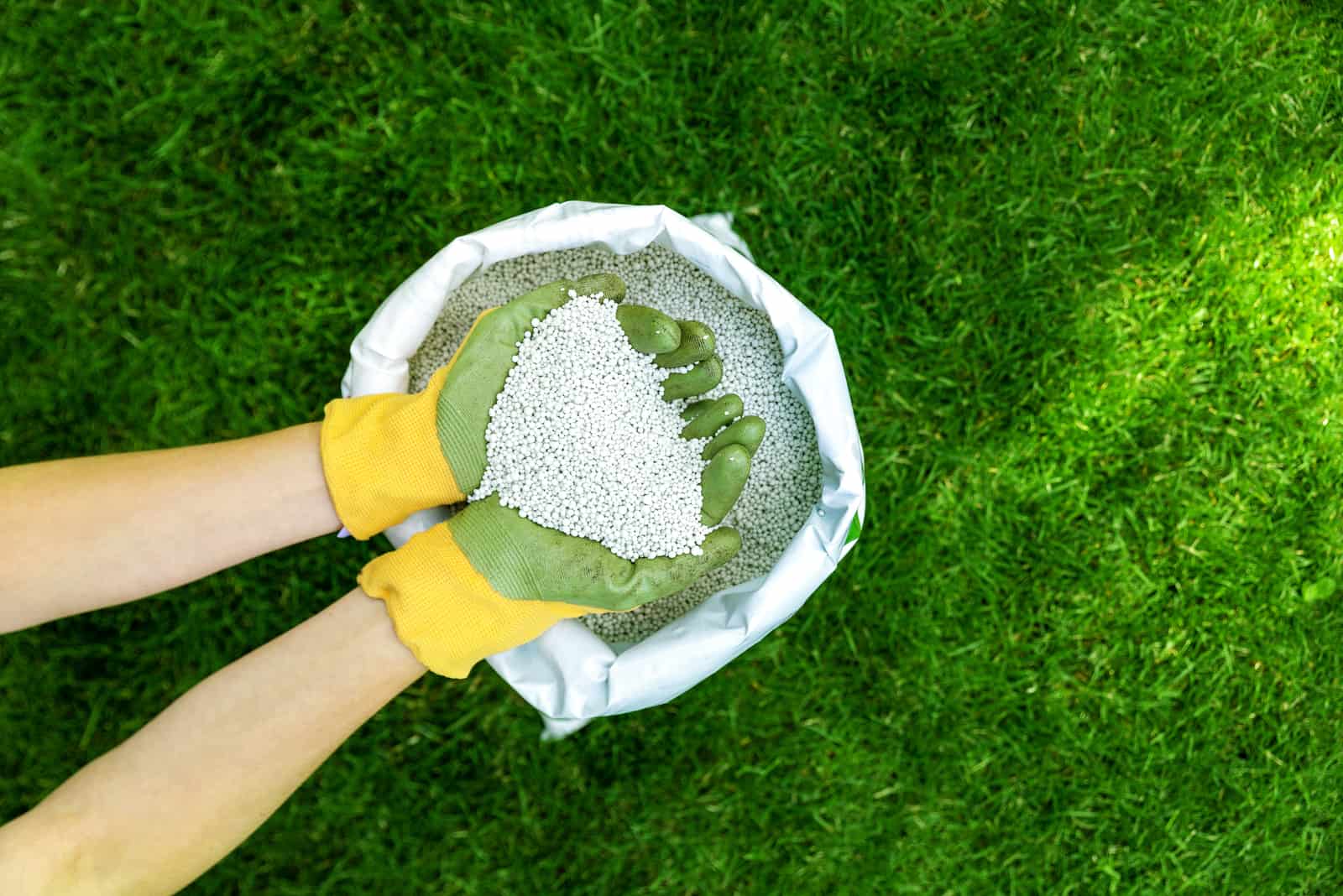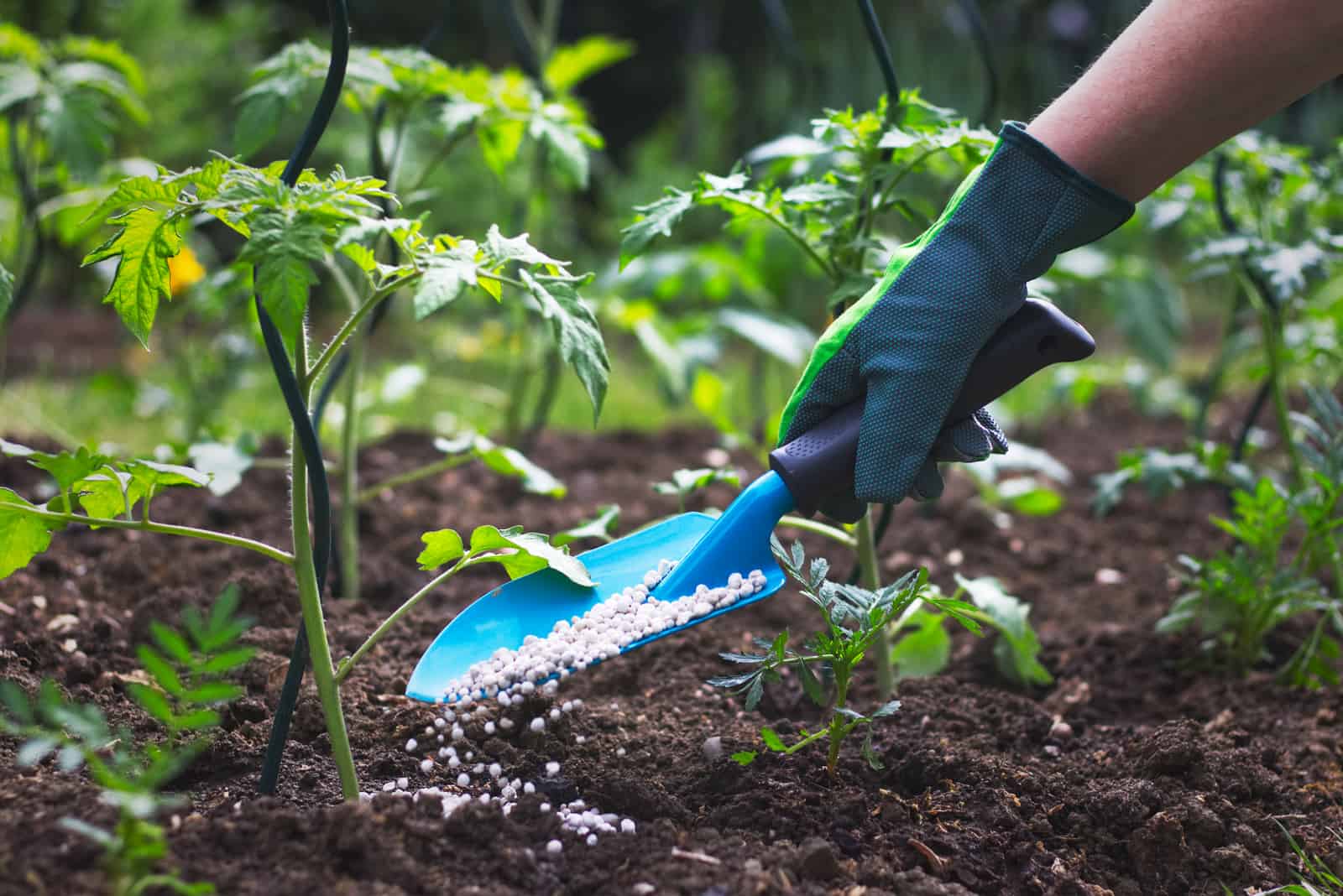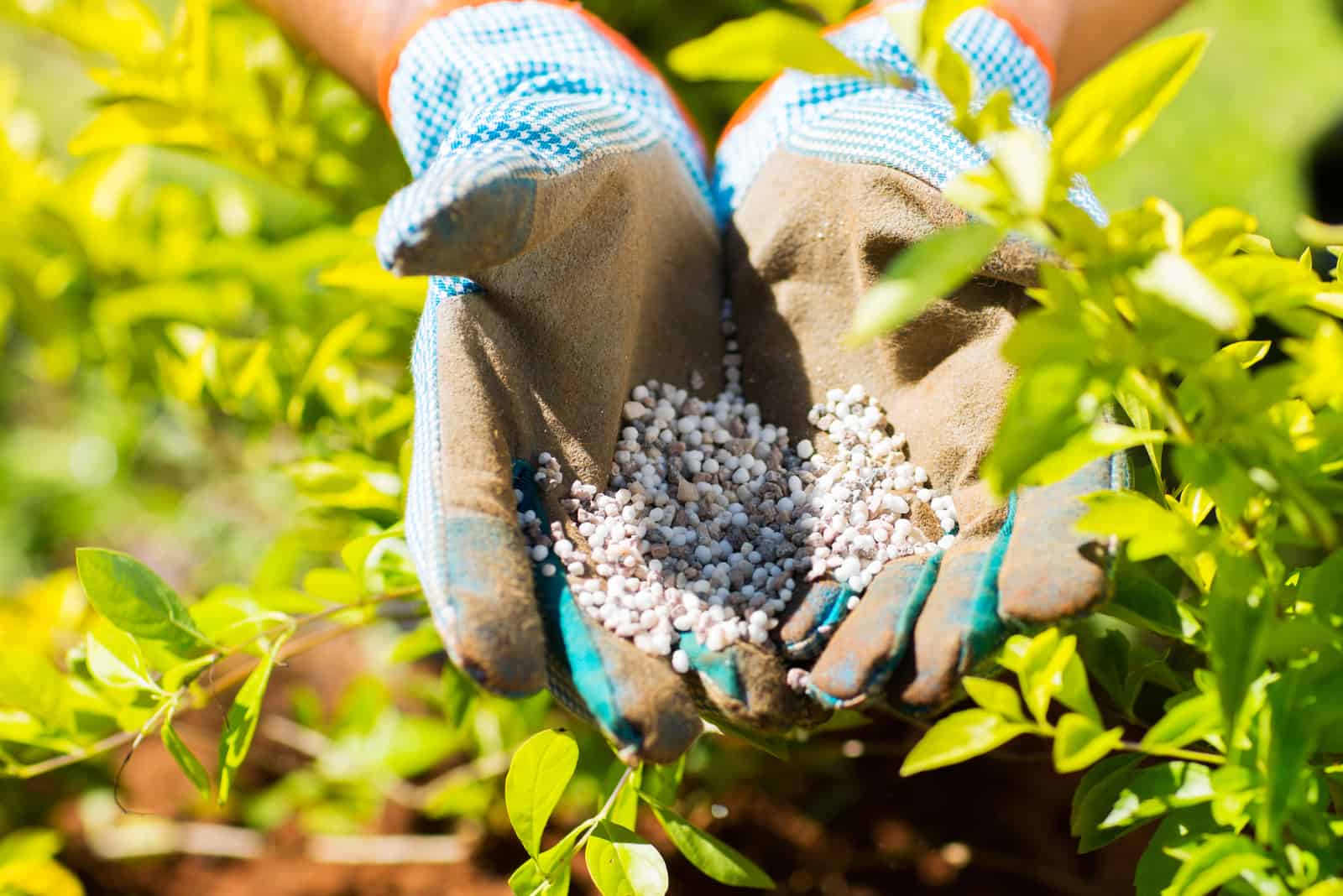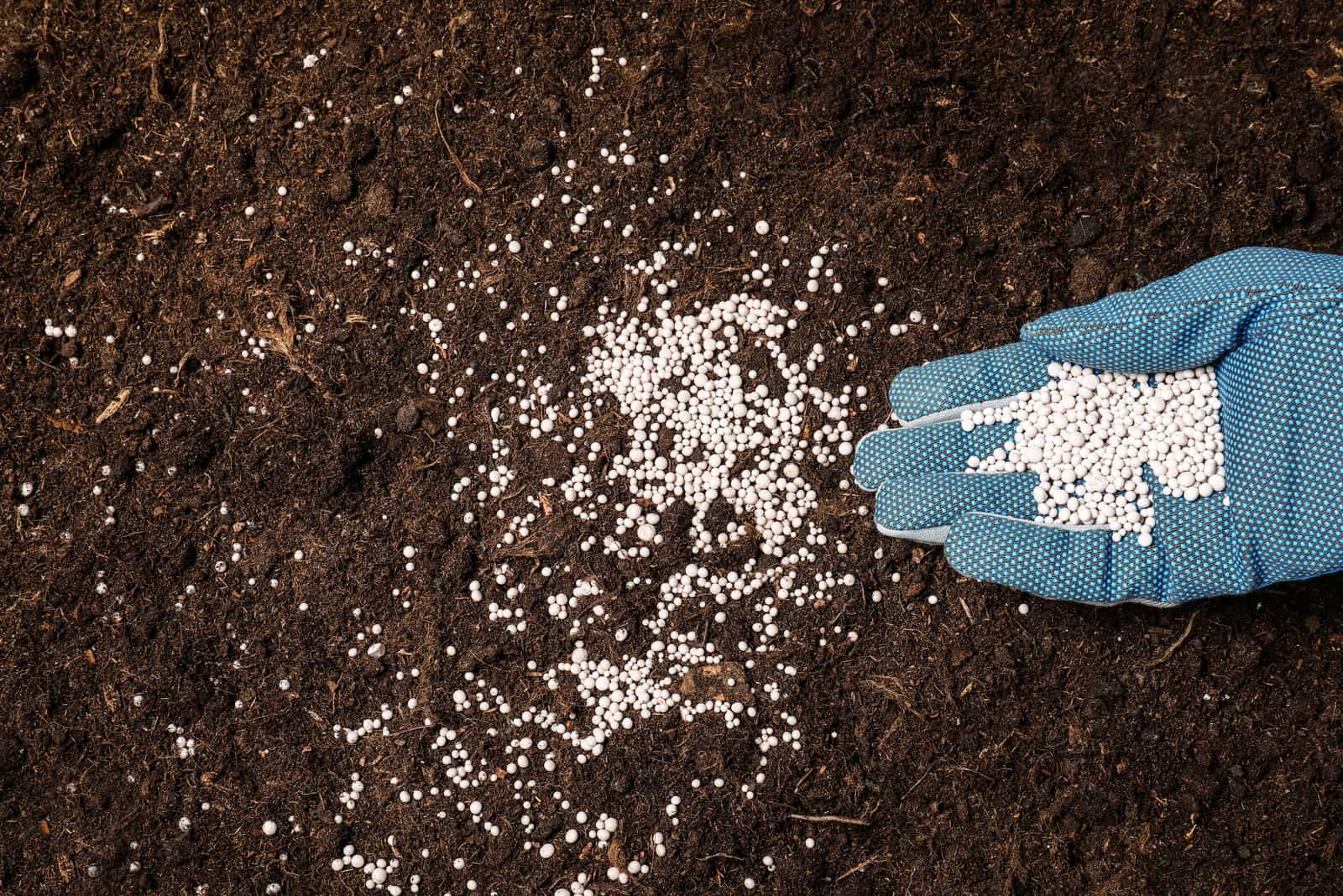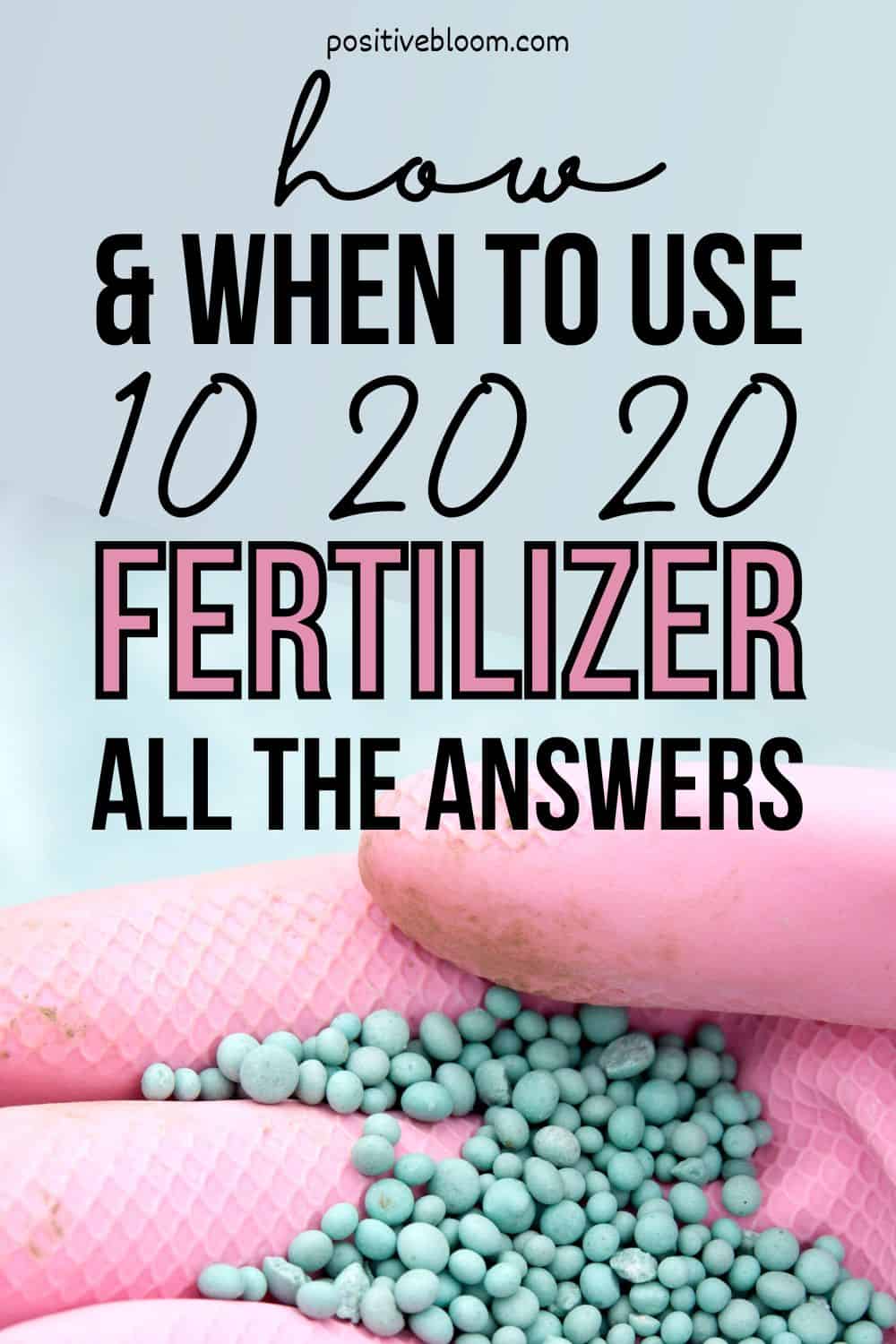When looking for plant fertilizer, you’ll come across many different kinds, and each of them is different.
It can be difficult to know which fertilizer to use, but there are three numbers on the package that will give you the answer.
You can’t apply the same fertilizer to vegetables, flowers, and lawns, so learning more about each one is essential.
In this article, I’ll cover one type of fertilizer that will meet all the requirements of vegetables.
10 20 20 fertilizer will increase your harvest and help your veggies grow healthy and large.
But before you start using 10 20 20, it’s essential to know how, when, and why to use it.
Don’t worry, because after reading this article, you will know everything!
Let’s get started!
What Kind Of Fertilizer Is 10 20 20?
10 20 10 is a fertilizer that consists of 10% Nitrogen (N), 20% Phosphorus (P), and 20% Potassium (K).
Compared to most other common fertilizers, this particular one is rich in the three primary nutrients, especially Phosphorus and Potassium.
Due to a higher P and K concentration, 10 20 20 is perfect for root vegetables, legumes, and beans. You’ll find out why later in this article!
I suggest you pay close attention to the information you find because, trust me, you don’t want to accidentally over fertilize your plants!
What Does 10 20 20 Mean?
If you are not into chemistry, I’m afraid I have to disappoint you because there is a little bit of chemistry involved in gardening. I’m sure you want the best for your plants and garden, so it shouldn’t be an issue.
10 20 20 stands for the NPK ratio of macronutrients in this fertilizer. If we take a look at the periodic table, we will see that N stands for Nitrogen, P for Phosphorus, and K for Potassium.
So, the first number in 10 20 20 shows us the concentration of Nitrogen. Although it may seem that 10% is a pretty high concentration of this nutrient, it’s not really. When compared to nitrogen fertilizers such as urea (NPK ratio 46 0 0), for example, 10 20 20 won’t suit the needs of plants that require more Nitrogen for better growth.
The second and third numbers (20) represent the two other nutrients, Phosphorus and Potassium. This is a high percentage, and if the soil lacks any of these nutrients this fertilizer will do it wonders.
Each fertilizer has a different NPK ratio, which means that the concentration of each nutrient depends on the fertilizer type.
Wondering what happened with the other 50%? It contains fillers and smaller concentrations of micronutrients such as manganese, calcium, iron, boron, or chlorine.
Let’s see the role of these macronutrients in plant growth.
Nitrogen
What gives our plants that beautiful green color? The answer is chlorophyll.
What is the connection between chlorophyll and Nitrogen? This macronutrient is actually a part of the chlorophyll molecule, and it’s not only in charge of the green color, but also assists in producing food by using photosynthesis.
If some of your plants are turning yellow, you should check the nitrogen supply. Nitrogen sources include ammonium nitrate, liquid Nitrogen, sodium nitrate, and urea nitrogen.
Nitrogen also helps the plant restore energy, which encourages new growth.
Here are the three main benefits of Nitrogen:
• It speeds up the shoot growth of flowering plants.
• Promotes the flower buds’ growth.
• Increases the quality of fruit.
I suggest you perform a soil test before adding any of these nutrients, and always check the total nitrogen concentration on the label of the fertilizer before you add any.
If you grow leafy greens such as kale, spinach, or lettuce, you’ll need fertilizer rich in Nitrogen.
Phosphorus
Phosphorus is an irreplaceable macronutrient and essential for healthy plant growth.
Here is a list of the benefits of this macronutrient.
• Promotes plant growth and root development at the beginning of the growing season. It’s an essential nutrient for annual plants.
• Plays a major role in cell division and the formation of DNA and RNA.
• Improves water absorption and promotes the uptake of other important nutrients.
• Promotes seed development and flower blooming.
• Makes the plant stronger and helps it survive in harsh weather conditions.
• Promotes photosynthesis.
When the soil is lacking Phosphorus, the plant may become discolored and the shoot growth may be significantly reduced. This means that although your plant may seem healthy, it is actually struggling to grow.
Lettuce and legumes are annual plants with limited root growth, but they grow very fast so fertilizers rich in Phosphorus work perfectly for them.
On the other hand, plants like shrubs, vines, or trees don’t require much Phosphorus as their established roots are strong enough to survive harsh conditions. Additionally, the roots of these plants don’t grow very quickly, so more Phosphorus won’t have a significant effect.
Potassium
The third number in 10 20 20 stands for Potassium, commonly known as Potash. Potassium enhances drought resistance, especially in vegetables.
Plants require watering regularly, and even plants that don’t require much water will struggle to grow if they don’t get any at all for an extended period.
Potassium provides water vapor balance, making the plants less susceptible to underwatering.
This nutrient aids in stem formation in deeper roots and promotes the development of flowers. Roses benefit from fertilizers rich in Potash.
Growers add plenty of Potassium to their vegetables to promote healthy crop production. For example, potatoes need Potash to grow their tubers. The crops will form more quickly and be of a higher quality if provided with a higher concentration of potassium.
How does Potassium deficiency affect plants? Here’s a list of possible consequences:
• The leaves may turn brown and their tips may curl.
• Purplish blotches may appear on the undersides of the leaves.
• The plant may suffer from stunted growth and poor root development.
• Frost causes severe damage as soon as it occurs.
How To Supplement Potassium Organically
Perform a soil test before adding chemical fertilizers, and if it shows a slight Potash deficiency you can increase the concentration organically by:
• Using compost because it contains water-soluble Potash compounds.
• Using kelp meal: Due to its quick-release form, it will supplement Potash rapidly.
• Granite dust: This is an inexpensive way to supplement Potassium, but it’s slow-release so you’ll need to wait before it starts working.
Now that you know the roles of each macronutrient, let’s see how the ratio 10 20 20 affects the plant.
What Are The Benefits Of 10 20 20?
Each nutrient has its benefits, and when combined with a 10 20 20 ratio they can do wonders for certain plants.
As you may have guessed, the nutrient concentrations in this fertilizer promote the overall health of your plants.
Your vegetables will appreciate this type of plant food and reward you with healthy and tasty crops. This type of fertilizer improves soil fertility, so it’s a great way to increase yield.
10 20 20 makes the roots, stems, and leaves stronger and healthier, which ensures a better harvest.
It promotes root growth and seed and seedling development, so the roots will establish quickly and make the plant less susceptible to diseases.
The Best Use Of 10 20 20
Now, the question is which plants will benefit the most from this fertilizer and in what way.
I mentioned that vegetables need high phosphorus fertilizers, and also fertilizers rich in Potash.
10 20 20 is a perfect fertilizer for root vegetables and legumes.
Let’s get into details!
10 20 20 And Root Vegetables
Root vegetables produce their crops underground. The difference between these vegetables and the ‘regular ones’ is that the crops uptake their nutrients from the soil.
I look at growing root veggies like some sort of treasure hunt; once you find the crops, you’ll be happier than ever!
The most common root vegetables are potatoes, beets, onions, carrots, sweet potatoes, and turnips.
All these veggies are parts of cuisines from all over the world.
So, what do these veggies need to grow healthy and produce the tastiest crops?
As well as loose soil and full sun, they need food in order to produce food. As Phosphate improves root growth, these plants will benefit from fertilizers rich in this nutrient.
On the other hand, potassium promotes the healthy growth of crops, so you’ll need a fertilizer rich in that nutrient as well.
Hence, 10 20 20 fertilizer meets all the requirements of root vegetables and I highly recommend using it!
10 20 20 And Legumes
If you grow legumes like soybeans, peas, or runner beans, you’ll know how these plants aren’t really fussy about anything.
They grow pods with seeds inside and have high nutritional value. They are suitable for beginner growers.
Legumes require moist soil, direct sunlight, and regular watering. Although legume plants are not heavy feeders, they will benefit from fertilization.
The great thing about legumes is that they produce Nitrogen, so they won’t need a fertilizer with a higher concentration of that macronutrient.
On the other hand, legumes are all about seeds, so they need something to improve seed development.
What about Potassium? Here are a couple of examples of the importance of Potash for legumes:
• Promotes protein synthesis.
• Creates water balance and prevents the plants from becoming dehydrated.
• Improves root nodule function
If legumes suffer from Potash deficiency, they won’t be able to produce Nitrogen.
A 10 20 20 formulation will do wonders for legumes in your garden.
When To Use 10 20 20?
As we mentioned, this fertilizer is perfect for annual plants and should be applied at the beginning of the growing season.
The best thing would be to apply it in early spring so it can give your plants a perfect head start and feed them during all the growth stages.
One great thing about slow-release fertilizers is that they release nutrients gradually.
The best time of day to apply fertilizer is in the evening or the coolest part of the day, and I strongly recommend you stick to this.
If you fertilize during the hottest parts of the day, your plants may suffer from severe burns.
Is 10 20 20 Good For Lawns?
10 20 20 isn’t lawn fertilizer as the grass requires lots of Nitrogen. For example, fully grown grass requires fertilizer that contains more Nitrogen, little or no Phosphorus, and a smaller concentration of Potash.
Many growers use 32 0 4 NPK formulation for established lawns. Bear in mind that a higher amount of Phosphate may cause severe damage to your grass.
Grass seeds need Phosphate for root growth and Nitrogen for growing blades and forming stalks.
But 10 20 20 fertilizer doesn’t fulfill the needs of grass, so I suggest using 22 23 4 fertilizer.
How To Apply 10 20 20
The first thing you need to do is prepare the soil for fertilization. Two weeks before applying 10 20 20, turn the soil over or till it at a depth of 6 inches.
Spread the 10 20 20 fertilizer evenly over the surface of the plot. Never mix 10 20 20 in your soil as it can burn the plants.
Spread about 3 pounds of fertilizer per 100 square feet.
After applying fertilizer, it’s essential to water the soil to activate the granules.
If you’re planting beans, spread the granules of 10 20 20 fertilizer around the base of the plants.
I also recommend applying 10 20 20 during the flowering stage to stimulate the production of pods as it will result in a better harvest. This is due to the fact that it contains Nitrogen, which promotes the growth of pods and flowers.
Safety Measures
Fertilizers are made of chemicals, which means that overdosing can burn plants. Unfortunately, these chemicals may damage our hands, so we need to be extremely careful when using fertilizers.
The first thing to discuss is overfertilization. Adding too much 10 20 20 may burn the plants, limit their growth, and eventually kill them.
On the other hand, if you add too little or under fertilize your plants they may suffer from discoloration, the roots won’t grow, and the plants will produce fewer flowers.
Always use gloves when fertilizing, regardless of the type of fertilizer you use. Nitrogen contains some hazardous elements, so not wearing gloves is definitely not a good idea.
Fertilizer packages should be kept out of reach of toddlers and pets.
Water-soluble fertilizers are active as soon as they are dissolved. This implies you should dry your gloves before using fertilizers.
Fertilizer will cause burns if it comes into contact with skin, so you can imagine what would happen to your eyes. I recommend wearing safety glasses whenever you use 10 20 20 or any other fertilizer.
When using 10 20 20, don’t drink, chew, eat, or smoke.
FAQs
What is the ratio of a 10 10 20 fertilizer?
10 10 20 fertilizer contains 10% Nitrogen, 10% Phosphorus, and 20% Potassium. It can be used for fruit, vegetables, flower beds, trees, and shrubs.
Can I use 20 20 20 fertilizer on all my plants?
20 20 20 fertilizer is an all-purpose fertilizer, which means that it can be used for all plants. If you have poor soil at the beginning of the growing season, adding 20 20 20 plant fertilizer will do wonders for it.
What is the difference between a 10 20 10 fertilizer and a 10 10 20 fertilizer?
10 20 10 has a higher concentration of Phosphate than 10 10 20. 10 20 10 is a better choice for fertilizing lawns. 10 10 20 has more Potash, which makes it more suitable for vegetable gardens.
How many pounds of 10 20 20 fertilizer do I need to fertilize my lawn?
For example, if you have a 50 lb bag of 10 20 20, you can cover approximately 10,000 square feet. This depends on the application rate; a 50-pound bag of fertilizer will cover 10,000 square feet at the medium rate and 13,000 square feet at the low rate.
Wrapping Up
Many growers will often tell you to use only organic fertilizers like mulch. However, the soil may be suffering from a deficiency of some specific nutrient, so a chemical fertilizer is required.
10 20 20 fertilizer is ideal for annual plants, root vegetables, and legumes, and it provides the proper NPK ratio for these plants.
Each nutrient has its own function, which is why it’s essential to know if your soil either lacks or has too much of one nutrient.
If you grow any of these plants in your garden, 10 20 20 fertilizer should be your choice. What are you waiting for? Put on your gloves and feed your plants to get the tastiest crops ever!
Until next time!
Like this post? Share or pin it for later!

